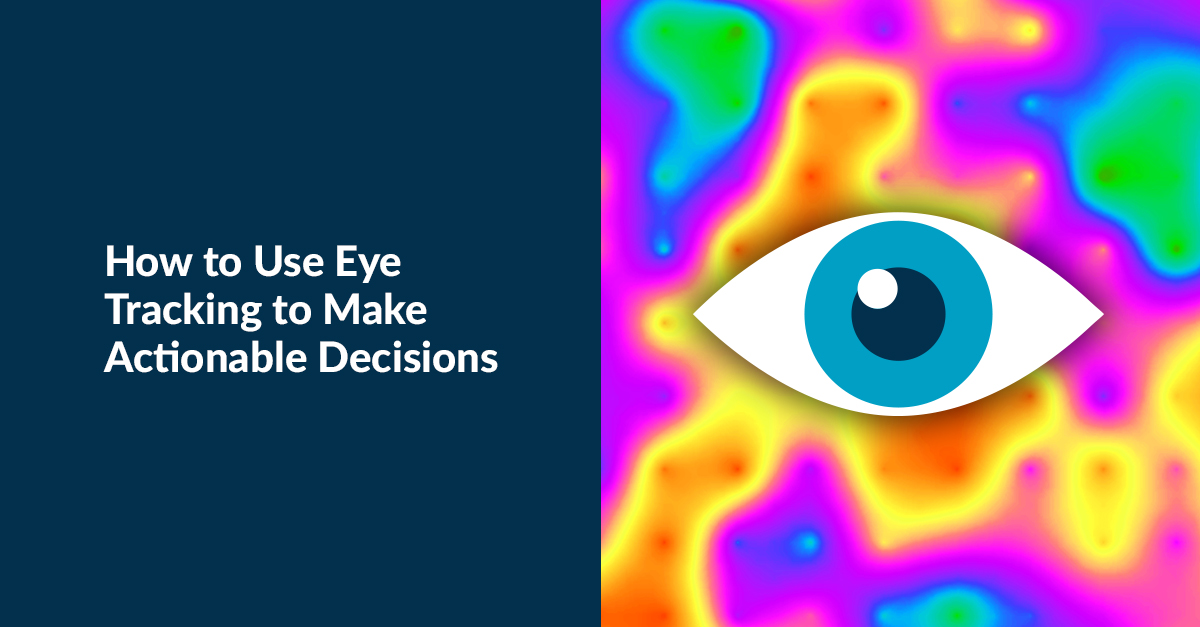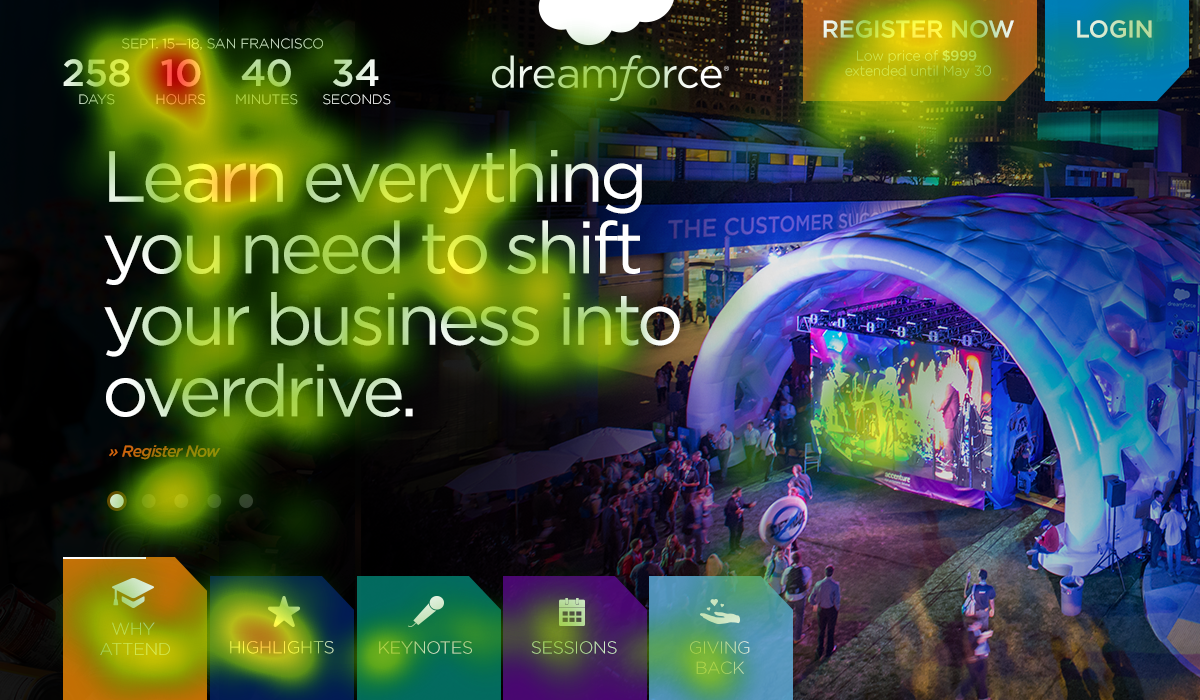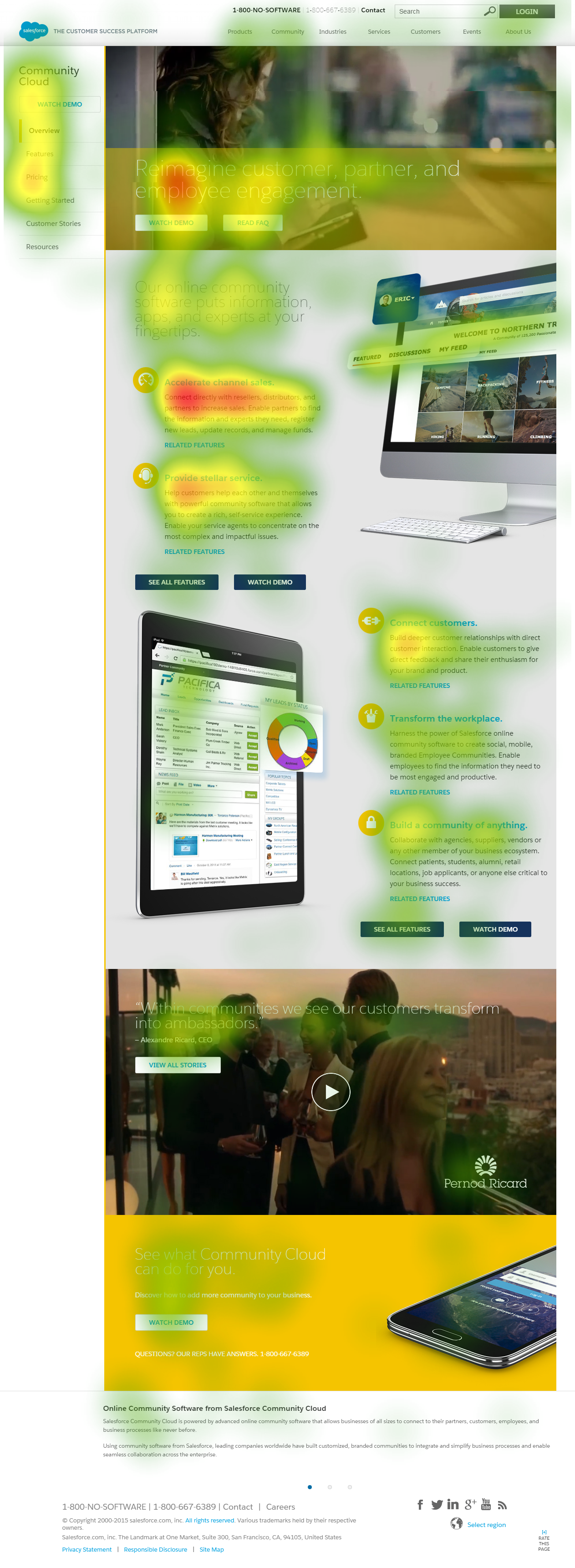
Big data is a hot topic right now. Yet many marketers forget that qualitative data is just as important as quantitative data—if not more so.
Quantitative data can tell you what users are doing (pages, conversations, time on page, etc.). But only qualitative data can tell you why. That’s where techniques like eye tracking come in.
What Is Eye Tracking?
Eye tracking measures where the eye is focused, for how long, and how the focus moves. It can prove invaluable when evaluating interfaces.
 (Image courtesy of
(Image courtesy of iTracking Research
)Heat Maps Tell a Story
Eye tracking heat maps are a visual representation of where on a webpage or application a user or group of users concentrated and for how long. The color red is the most concentration and the color green or transparent is the least concentration.
Eye Tracking Answers Questions
Have you ever wondered…
- How do people consume content on my website?
- Did they see the call-to-action on my app?
- Did they notice the new promotion in my print ad?
Eye tracking can answer these questions and more.
 (Image courtesy of iTracking Research)
(Image courtesy of iTracking Research)
Here are three examples of how you can use eye tracking results to make actionable decisions:
- Comparisons – When evaluating multiple site layouts, eye tracking can show which design performs better based on your goals.
- Performance – When combined with user testing, eye tracking can show whether users are able to complete the task and where they looked first. Let’s say they expected to find a certain element in a particular spot and didn’t. You can tweak your layout, order, or other elements accordingly.
- Timing – Time-to-target tracking can help design teams understand how quickly users can find something on a page. Simplifying the flow can lead to more conversions and happier customers.
You can see how eye tracking heat maps can help you understand and track users’ attention. Now, find an eye tracking service provider, and use the results to create better interfaces, write better content, and provide better experiences.